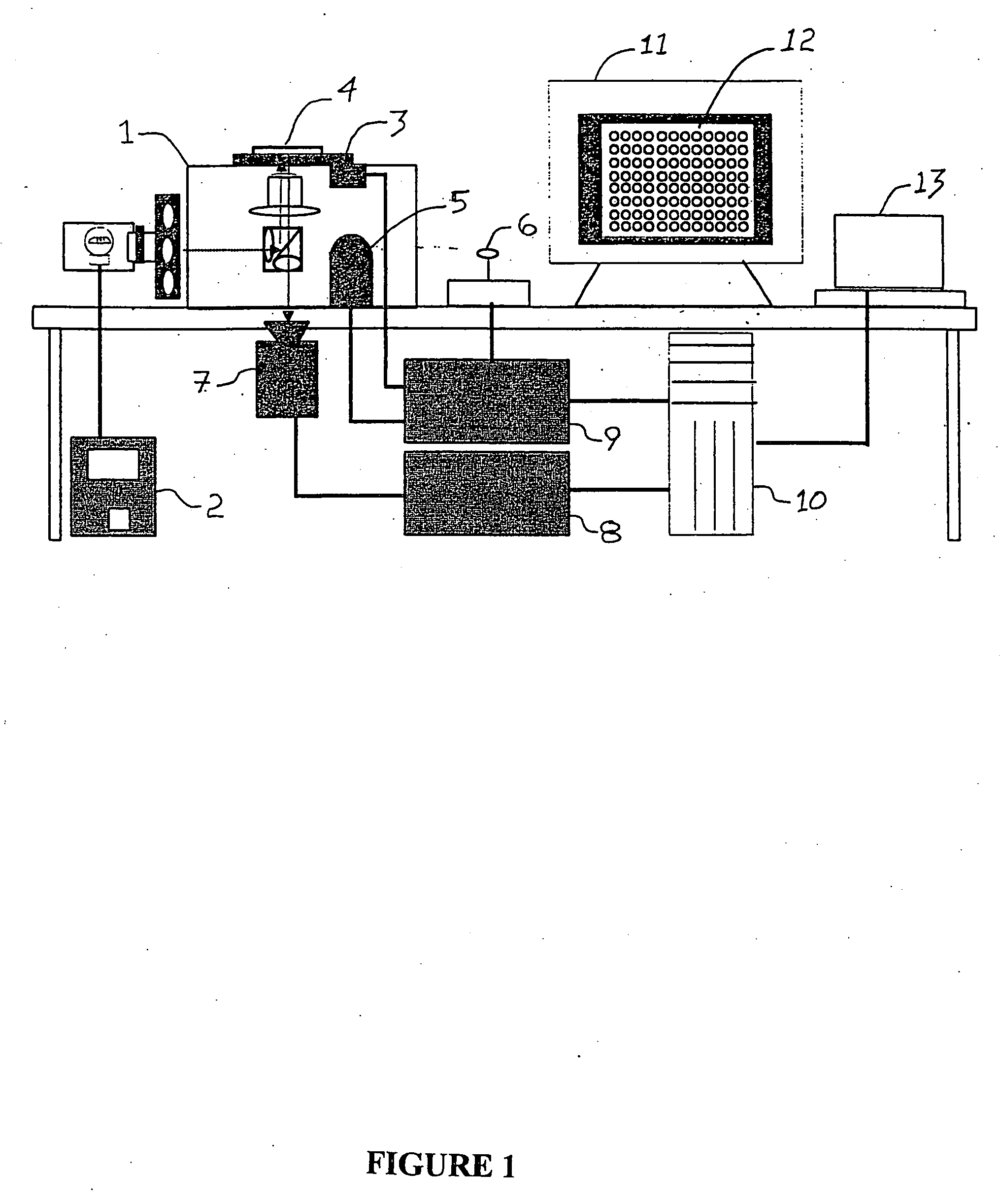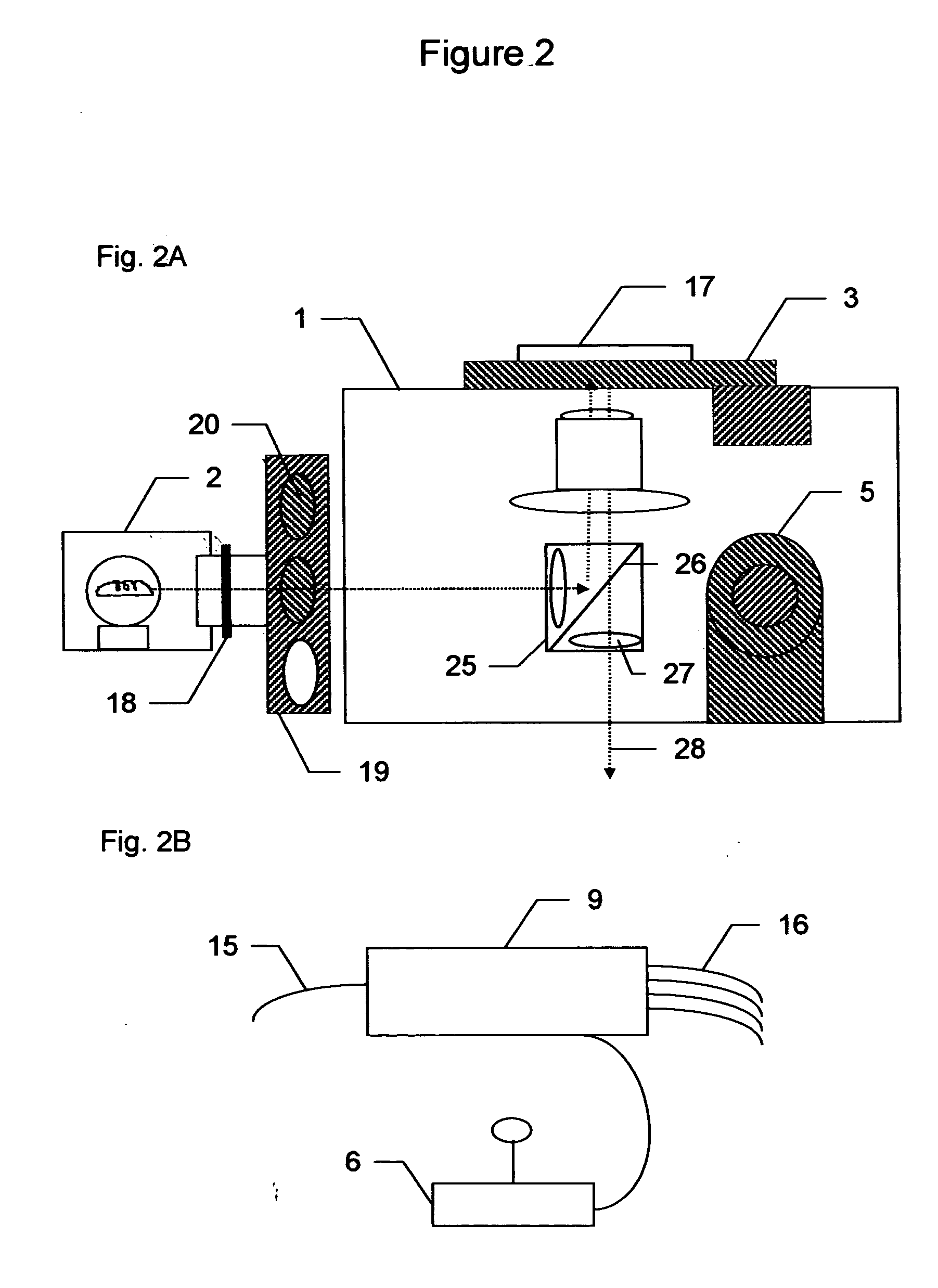System for cell-based screening
a cell-based screening and molecular biochemical technology, applied in the field of fluorescence-based cell and molecular biochemical assays for drug discovery, can solve the problems of inflammatory response and overall nucleus shrinkag
- Summary
- Abstract
- Description
- Claims
- Application Information
AI Technical Summary
Benefits of technology
Problems solved by technology
Method used
Image
Examples
example 1
Cytoplasm to Nucleus Translocation Screening
a. Transcription Factors
[0183] Regulation of transcription of some genes involves activation of a transcription factor in the cytoplasm, resulting in that factor being transported into the nucleus where it can initiate transcription of a-particular gene or genes. This change in transcription factor distribution is the basis of a screen for the cell-based screening system to detect compounds that inhibit or induce transcription of a particular gene or group of genes. A general description of the screen is given followed by a specific example.
[0184] The distribution of the transcription factor is determined by labeling the nuclei with a DNA specific fluorophore like Hoechst 33423 and the transcription factor with a specific fluorescent antibody. After autofocusing on the Hoechst labeled nuclei, an image of the nuclei is acquired in the cell-based screening system and used to create a mask by one of several optional thresholding methods, ...
example 2
Automated Screen for Compounds that Modify Cellular Morphology
[0205] Changes in cell size are associated with a number of cellular conditions, such as hypertrophy, cell attachment and spreading, differentiation, growth and division, necrotic and programmed cell death, cell motility, morphogenesis, tube formation, and colony formation.
[0206] For example, cellular hypertrophy has been associated with a cascade of alterations in gene expression and can be characterized in cell culture by an alteration in cell size, that is clearly visible in adherent cells growing on a coverslip.
[0207] Cell size can also be measured to determine the attachment and spreading of adherent cells. Cell spreading is the result of selective binding of cell surface receptors to substrate ligands and subsequent activation of signaling pathways to the cytoskeleton. Cell attachment and spreading to substrate molecules is an important step for the metastasis of cancer cells, leukocyte activation during the infl...
example 3
Dual Mode High Throughput and High-Content Screen
[0221] The following example is a screen for activation of a G-protein coupled receptor (GPCR) as detected by the translocation of the GPCR from the plasma membrane to a proximal nuclear location. This example illustrates how a high throughput screen can be coupled with a high-content screen in the dual mode System for Cell Based Screening.
[0222] G-protein coupled receptors are a large class of 7 trans-membrane domain cell surface receptors. Ligands for these receptors stimulate a cascade of secondary signals in the cell, which may include, but are not limited to, Ca++ transients, cyclic AMP production, inositol triphosphate (IP3) production and phosphorylation. Each of these signals are rapid, occuring in a matter of seconds to minutes, but are also generic. For example, many different GPCRs produce a secondary Ca++ signal when activated. Stimulation of a GPCR also results in the transport of that GPCR from the cell surface membran...
PUM
| Property | Measurement | Unit |
|---|---|---|
| volume | aaaaa | aaaaa |
| volume | aaaaa | aaaaa |
| diameter | aaaaa | aaaaa |
Abstract
Description
Claims
Application Information
 Login to View More
Login to View More - R&D
- Intellectual Property
- Life Sciences
- Materials
- Tech Scout
- Unparalleled Data Quality
- Higher Quality Content
- 60% Fewer Hallucinations
Browse by: Latest US Patents, China's latest patents, Technical Efficacy Thesaurus, Application Domain, Technology Topic, Popular Technical Reports.
© 2025 PatSnap. All rights reserved.Legal|Privacy policy|Modern Slavery Act Transparency Statement|Sitemap|About US| Contact US: help@patsnap.com



